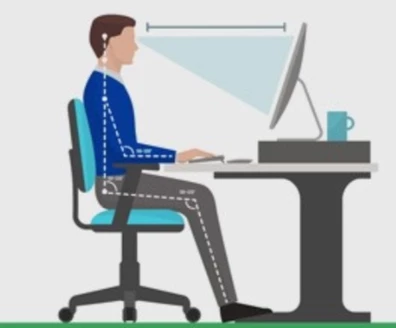When Work Gives You a Pain in the Neck
February 20, 2019
Many office workers are no strangers to neck and upper back pain. Ever wondered why? Or how to treat or prevent it?
Most of the time, office workers’ neck or upper back pain is as a result of ongoing joint stiffness and muscle tightness, rather than an acute onset injury. Muscles feel tight when they are put through too much load over a period of time, or when they are held in a shortened position for a sustained period of time. Similarly, joints tend to feel stiff when they’re placed under too much load over time, or held in a sustained end range position.
As an office worker, it’s certainly easy to spend a prolonged period of time in one position. So it’s important to limit this as much as possible, and to make sure that this position is a comfortable one and that not too much load is placed through the shoulder and neck muscles.
Here’s some ways to reduce your likelihood of developing neck or upper back pain if you’re an office worker.
- Take regular breaks from your desk. Make trips to the water cooler and toilet, take a phone call standing up, have a discussion with a co-worker while walking in the corridor.
- Utilise a sit-stand desk if possible to be able to alternate between sitting and standing positions, while not interrupting your work.
- Sit with your bottom at the very back of the chair. The back of the chair should then prevent you from slouching. (Poor lower back posture has a knock on effect of poor upper back and neck posture).
- Sitting with your feet flat on the floor, or on a footstool, will also make it easier to maintain good sitting posture.
- Have your chair at a height where, if you bend your elbows to 90deg, your forearms are supported by the desk.
- Place your keyboard and mouse just far back enough on the desk that the ends of your forearms can be supported, but not so far that you have to reach.
- Have the top of the monitor at eye level, and at a distance that is comfortable for you to read the text on the screen.

We also know that being generally fit and active, and managing your work and life stress helps to reduce your risk of developing neck and upper back pain. So make sure you’re getting plenty of general exercise, and that it’s exercise you enjoy.
Maybe you’re suffering work related neck or upper back pain, but you’re not an office worker?
Neck and upper back pain is also very common in people with work involving prolonged or repeated movements with their arms out in front. For example, hairdressers, electricians, nightfillers etc.
For people in these professions, your neck and shoulders will be placed under less load, the more you can perform these tasks with your elbows close to you. This won’t always be possible, but trying to be as close to the task as possible should mean you don’t need to reach as far, and therefore don’t need to put as much load through your neck and shoulders.
How can physiotherapy help?
If you are suffering from neck or upper back pain, hands on treatment from a physio can help to relieve pain and feelings of joint stiffness or muscle tightness. Exercises to strengthen specific muscles around your neck and shoulders that might be weak can also help to make the neck and shoulder more capable of dealing with load.

Need help dealing with neck or upper back pain? Contact our physiotherapist in Aubin Grove today!
-
 What Can Make Neck Pain a Headache?
What Can Make Neck Pain a Headache?
Often people experiencing a headache are also experiencing neck pain/tightness a...
-
 How Physio Can Help Your Headaches
How Physio Can Help Your Headaches
Headaches are no fun. Some people will only experience short-term headaches ever...
-
 Muscle Strains
Muscle Strains
Winter sports are back and with them come more muscle strains, particularly hams...
